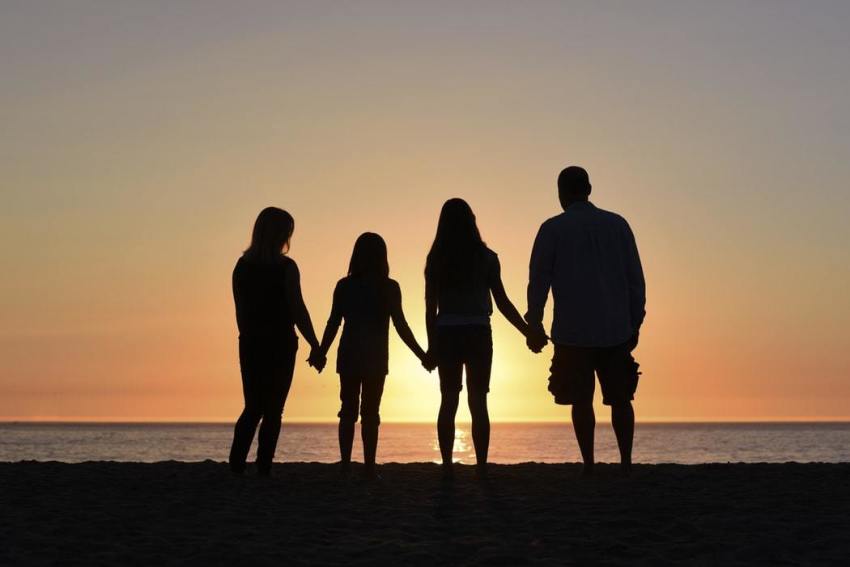Unless families get more support, religions in America could face continuing decline: AEI fellow

Unless families get more support and fertility rates are increased among the faithful, religious communities in America could continue on a path toward “terminal decline,” says economist and researcher Lyman Stone.
“If this is about household dynamics, if this is about families, if this is about babies, as I am arguing it is, could society support parents more? Could we change this? And could we do something that would be justifiable in a pluralist and liberal society? As we’re not just going to force people to pray in public schools or something,” the researcher said.
Stone, who is an adjunct fellow at American Enterprise Institute, a Washington D.C.-based think tank, and a research fellow at the Institute for Family Studies, made the argument during a webinar Thursday, billed “Religiosity in America: Trends of the past and options for the future.”
At the beginning of his presentation, Stone made it clear that while current indicators point toward a “terminal decline” of religion in America, it doesn’t have to continue on that path.
“It’s rapidly heading into terminal decline, … a kind of death,” Stone said of religion to webinar participants, including panelists Daniel Cox, a research fellow in polling and public opinion at AEI, and Ross Douthat, a conservative political analyst, author and New York Times columnist.
“Certainly there is plenty … I have written that can feed into that narrative, but by the time I get to the end I actually want to challenge this view that religiosity in America is necessarily going to follow this terminal downward slope,” he said.
Stone, who is a former international economist at the U.S. Department of Agriculture, highlighted research showing that even though the share of Americans who say they are affiliated with some kind of religion or attend church weekly are all trending downward, America is still more religious today than during the late 18th and early 19th centuries.
More Americans today, however, identify with no particular religion than at any period in the nation’s history. Only 65% of Americans now identify as Christian, while those who identify as religiously unaffiliated swelled to 26%, a recent study from the Pew Research Center noted.
The biggest changes in religious behavior, said Stone, is not coming from adults turning their back on faith but differences in religious outlook between generations that are largely influenced by the family life of those generations.
In older generations, Stone argued, data show that families tended to be more religious. He also pointed to studies showing that households that have more at home religious family activities tend to have children who are more likely to remain religious later in life.
The reverse is also true.
And younger generations, he said, are losing faith as teenagers and don’t seem to be returning to it as previous generations did.
“There is still no evidence of continuing adult secularization. Rather, people are at their least religious between the ages of 18 and 22, and on average they either stay the same or get slightly more religious over the rest of their life,” he said.
“Declining religion is not about adults making a decision to leave religion. It’s not about the deeply considered rational choices of people who’ve decided to leave the Church. The vast majority of declining religiosity in America is happening to 13-year-old's, 14-year-old's, 16-year-old's. It’s happening to minors while they are at home,” Stone argued.
Research published by the Barna Group last fall from Ryan Burge, an assistant professor of political science at Eastern Illinois University and pastor of First Baptist Church of Mt. Vernon, Illinois, pointed to related struggles among younger generations raised in the church who aren’t typically returning to church when compared with members of the “Baby boomer” generation born between 1945 and 1964.
In Burge’s analysis of the boomer generation, four different five-year cohorts reflected the “trademark hump” supported by traditional social science “when each birth cohort moves into the 36-45 age range. That’s exactly what the life cycle effect would predict: People settle down, they have kids, and they return to church.”
When he examined data for the younger cohorts, 1965-1969, 1975-1979 and 1980-1984, the data show a fading of the life cycle effect. While the hump is still there in the cohort measured from 1965-1969, a shift in the life cycle effect begins to emerge by around 1970.
“That trend line is completely flat—those people didn’t return to church when they moved into their 30s. You can see the beginnings of a hump among those born between 1975 and 1979, but in the next birth cohort the hump is actually inverted. That trademark ‘return to church’—which pastors and church leaders have relied on for decades—might be fading,” Burge said.
For anyone concerned with church growth, Burge says “this should sound an alarm.”
In his presentation, Stone noted that across all generations, religiosity tended to dip during the secondary years but because older generations were more religious than later generations, it could account for their higher reports of continued religiosity.
He suggested that a secondary school education system that is more supportive of religion was found to be important factors in maintaining religiosity as well as having two parents of the same religion.
He also argued that low fertility rates have resulted in a significant impact on the growth of America’s religious community.
“For virtually all religious groups the fertility is the overwhelming source of growth,” he said.
A share of people born into any religious tradition is going to leave it, Stone said, and if fewer people are born into that tradition the population that is left in that community will naturally grow smaller.
“Ultimately, what we see is as the absolute size of a religious community shrinks, the household environment for transmission becomes more difficult which means the only small religions that survive are those with very aggressive norms for household transmission. That is with very strong practices of household religious faith,” he said.
As a result, he said the data suggest that churches could continue to hemorrhage followers unless steps are taken to support families.
Policy positions he said that could help are child allowances that would encourage people to have more children and ending marriage penalties.
“Right now we have massive marriage penalties baked into the welfare code particularly for working class households,” Stone said.
He also recommended support for school choice that would help parents find schools for their children that support their values and would also help because parents find it harder to find schools that support their values.
Zoning laws that allow easier establishment of churches and the lowering of housing costs could also help, Stone said.



























